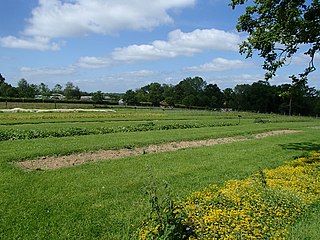 W
WThe Crop Trust, officially known as the Global Crop Diversity Trust, is an international nonprofit organization which works to preserve crop diversity in order to protect global food security. It was established through a partnership between the United Nations Food and Agriculture Organization and CGIAR acting through Bioversity International.
 W
WEuropean Forest Genetic Resources Programme (EUFORGEN) is an international network that supports the conservation and sustainable use of forest genetic resources in Europe. The programme’s tasks include to coordinate and promote in situ and ex situ conservation of forest genetic resources, to facilitate the exchange of information, and to increase public awareness of the need to conserve forest genetic resources.
 W
WIndian Seed Vault is a secure seed bank lies in a high-altitude mountain pass on the Chang La seed vault in Ladakh, India. It was built in 2010 jointly by the Defence Institute of High Altitude Research and the National Bureau of Plant Genetic Resources, this seed bank is the second largest in the world.
 W
WA seed bank stores seeds to preserve genetic diversity; hence it is a type of gene bank. There are many reasons to store seeds. One is to preserve the genes that plant breeders need to increase yield, disease resistance, drought tolerance, nutritional quality, taste, etc. of crops. Another is to forestall loss of genetic diversity in rare or imperiled plant species in an effort to conserve biodiversity ex situ. Many plants that were used centuries ago by humans are used less frequently now; seed banks offer a way to preserve that historical and cultural value. Collections of seeds stored at constant low temperature and low moisture are guarded against loss of genetic resources that are otherwise maintained in situ or in field collections. These alternative "living" collections can be damaged by natural disasters, outbreaks of disease, or war. Seed banks are considered seed libraries, containing valuable information about evolved strategies to combat plant stress, and can be used to create genetically modified versions of existing seeds. The work of seed banks spans decades and even centuries. Most seed banks are publicly funded and seeds are usually available for research that benefits the public.
 W
WA seed library is an institution that lends or shares seed. It is distinguished from a seedbank in that the main purpose is not to store or hold germplasm or seeds against possible destruction, but to disseminate them to the public which preserves the shared plant varieties through propagation and further sharing of seed.
 W
WThe Svalbard Global Seed Vault is a secure seed bank on the Norwegian island of Spitsbergen in the remote Arctic Svalbard archipelago. Conservationist Cary Fowler, in association with the Consultative Group on International Agricultural Research (CGIAR), started the vault to preserve a wide variety of plant seeds that are duplicate samples, or "spare" copies, of seeds held in gene banks worldwide. The seed vault is an attempt to ensure against the loss of seeds in other genebanks during large-scale regional or global crises. The seed vault is managed under terms spelled out in a tripartite agreement among the Norwegian government, the Crop Trust, and the Nordic Genetic Resource Center (NordGen).
 W
WThe UK Native Seed Hub (UKNSH) is a project of the Royal Botanic Gardens, Kew's Millennium Seed Bank Partnership growing and distributing seeds of UK native plant species. It is in part a response to the 2010 report Making Space for Nature by Sir John Lawton. The project, located at Wakehurst Place, in West Sussex, in the High Weald of southern England, is dedicated to enhancing the resilience and coherence of the UK's ecological networks by improving the quality, quantity, and diversity of UK seed species available for use in conservation, rehabilitation, and restoration projects.